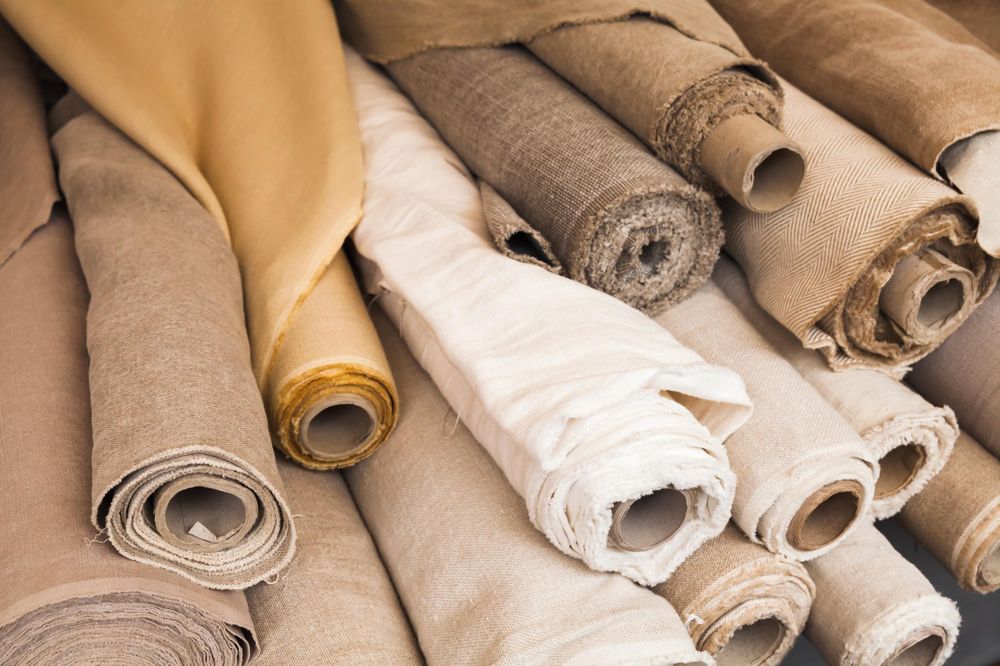
The Growing Importance of Sustainability in Fashion
The fashion industry, known for its creativity and innovation, faces the challenge of its significant environmental impact. Fast fashion’s quick manufacture and consumption of apparel have made the sector an important source of waste and pollution. Conventional textile production methods involve excessive water usage, harmful chemicals, and non-biodegradable materials, which strain natural resources and harm ecosystems. With increasing awareness of these issues, consumers and brands are advocating for more sustainable practices in fashion to reduce the industry’s ecological footprint and promote ethical labor practices.
The increasing use of eco-fabrics is critical in this shift towards sustainability. Eco-friendly fabrics are produced using methods that minimize environmental impact, from reducing water and pesticide usage to incorporating recycled materials that would otherwise contribute to landfill waste. As individuals increasingly prioritize the environment, there is a rising request for clothing crafted from eco-friendly materials, driving brands to pursue innovation and prioritize sustainability. This trend aids in preserving the environment and promoting a more ethical and accountable fashion industry.
Innovative Sustainable Fabrics on the Rise
In the past few years, numerous new eco-friendly textiles have appeared. Among these materials are organic cotton and recycled polyester, all designed to minimize environmental harm. Durable and often produced using water-efficient and low-energy methods, sustainable fabrics are intended to be longer-lasting. These advancements are crucial in addressing the environmental concerns associated with conventional textile production. Cultivating organic cotton involves avoiding synthetic pesticides or fertilizers, reducing its environmental impact. Recycled polyester made from post-consumer plastic bottles helps to reduce waste and energy consumption. These new materials show that the fashion industry can change and become more sustainable.
The Role of Technology in Advancing Sustainable Textiles
Technology is at the forefront of developing sustainable textiles. The possibilities are endless, from lab-grown leather to fabrics made from agricultural waste. These advancements make eco-friendly fashion more accessible and affordable.
Lab-Grown Leather
Lab-grown leather is a sustainable alternative to traditional animal hides, reducing environmental impact and requiring fewer resources. This synthetic leather is created by culturing animal cells, creating a material biologically identical to conventional leather but without ethical and ecological issues. Adopting lab-grown leather can substantially cut environmental impact by using less land, water, and energy and sidestepping harmful chemicals commonly used in traditional leather tanning methods.
Fabrics from Agricultural Waste
The fashion industry is repurposing agricultural waste into biodegradable and sustainable materials like Piñatex, a natural leather substitute for pineapple leaves. This circular approach to fashion production reduces reliance on traditional, resource-intensive materials. Pineapple leaves, a byproduct of pineapple cultivation, form a sustainable and biodegradable material, showcasing the potential for the fashion industry to convert waste into valuable resources.
Consumer Influence on the Market
Consumer demand significantly drives the market for sustainable fabrics. As more people become aware of the environmental impacts of their clothing choices, the demand for ethically made products increases. Consumers can influence firms to embrace more sustainable methods by preferring environmentally friendly products over conventional ones.
Social media and online platforms have amplified consumer voices, enabling them to advocate for sustainable practices on a larger scale. Brands that respond to these demands often see increased loyalty and positive brand perception. The rise of ethical consumerism means that brands must be transparent about their practices, and those that genuinely embrace sustainability are often rewarded with customer trust and loyalty.
How to Identify Sustainable Fabrics
Identifying sustainable fabrics can be challenging, especially with greenwashing practices. However, several certifications can help consumers navigate their choices. Look for labels like Global Organic Textile Standard (GOTS) or OEKO-TEX, which ensure the material meets specific environmental and social criteria.
Additionally, researching the brand’s production processes and material sourcing can provide insights into its sustainability efforts. Transparency is critical; reputable brands often share detailed information on their sustainability practices.
The Benefits of Choosing Sustainable Fabrics
Choosing sustainable fabrics offers numerous benefits. They are often free from harmful chemicals, making them safer for the wearer and the environment. Additionally, sustainable materials tend to be of higher quality and last longer, reducing the frequency of replacements and contributing to a lower carbon footprint.
Consumers choose sustainable textiles to promote ethical labor practices and help create a more sustainable fashion sector. This conscious choice supports environmental stewardship and social responsibility. Sustainable fabrics can also improve personal well-being, as clothing made from natural, non-toxic materials can reduce skin irritation and allergies.
The Future Outlook for Sustainable Textiles
The future of sustainable textiles looks promising, with continuous innovations and growing consumer awareness. As more brands commit to sustainability, we expect further advancements in eco-friendly materials and production processes. The fashion business is gradually moving toward a more environmentally friendly future where sustainability is required rather than an option.
Government regulations and industry standards will likely play a more significant role in promoting sustainable practices. These measures and technological advancements will drive the adoption of sustainable textiles globally. As scientific research and development continue to discover new sustainable materials and methods, the options for eco-friendly fashion will expand, making it easier for everyone to make sustainable choices.
Conclusion: Making Informed Choices
We must make well-informed decisions about the textiles we use and wear as we progress. By endorsing sustainable fabrics, consumers can play a vital part in advocating for environmentally conscious methods within the fashion industry. Thanks to technology and innovation, the vision of a sustainable fashion future is steadily becoming a reality.
Ultimately, both consumers and brands are responsible for instigating change. As more individuals embrace sustainable fashion practices and request eco-friendly alternatives, the industry will continue to improve. Together, we have the power to positively impact the environment and work towards creating a more sustainable world.